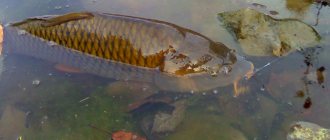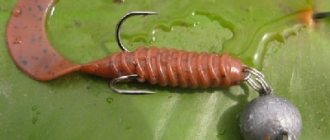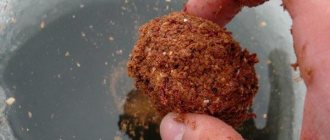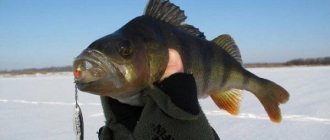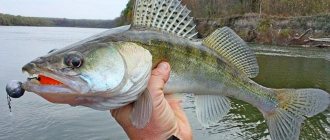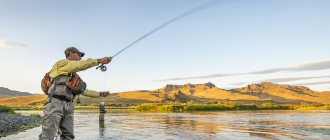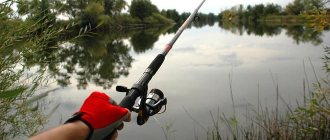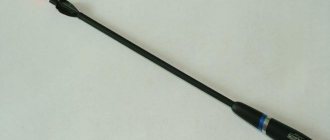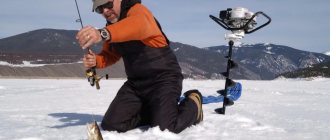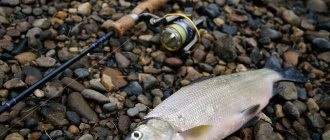Choosing a future fishing spot
Today PVA materials are very popular because...
They provide virtually perfect presentation of rigs on a wide variety of bottom types. They will allow us to gain confidence that there is always bait near our bait, and the hook is not lost somewhere in the bottom “garbage”. At the same time, PVA bags can be filled with almost any bait, and the mechanics of their use are quite clear and simple. But, at the same time, there are a couple of nuances, knowledge of which (in the future) will allow you to seriously increase your chances of success using this cool tactic! "There are no boundaries for perfection!" – this is my motto in life. That is why I look at many aspects of carp fishing as a real perfectionist! For example, when I use PVA materials, I always implement a couple of tricks to make my fishing as effective and efficient as possible. And the very first thing I do when I find myself on the shore of a reservoir is to immediately look for a place where I can more successfully present my equipment (located in a PVA package). Today there is an opinion that equipment (in PVA bags) can be safely thrown into any place. I think this is a fallacy! Since, after throwing the package into dense/overgrown areas of the reservoir, everything will definitely go wrong!
If the algae turns out to be too high, then the PVA bag will sink to the bottom, actually through them, thereby creating a very unpleasant angle of the fishing line, and to put it mildly, the result will not be what we wanted to achieve (in the end). If the algae is too thick, the PVA bag will simply get lost in it, and the carp will not find the bait. So, try to find such places on reservoirs to cast the equipment so that after it is immersed (inside the PVA bag) you will get a good fishing line angle and the bait will not get “stuck” in the algae.
How to use a PVA bag

The most effective thing you can do is to fill your PVA bags with lots of tasty bait that fish love.
It is very good to put food in such bags that is not very heavy - all because when the bag dissolves, the light bait will begin to slowly rise up, which will significantly increase your chances of attracting those individuals that swim several meters above the bottom (after all, as carps are known They don’t always spend time at the bottom; they also swim to the middle).
In addition to simply raising the bait up, the carp will be hooked by the fact that such food will float up at different speeds, which will greatly help the fish notice it. If you want the float-up speed to be different, then be sure to put in different baits so that they are not all of the same type. Such PVA bags are excellent helpers in attracting the attention of fish.
Another effective way to use a PVA bag is when fishing for large carp in thickets of aquatic vegetation. Why are PVA bags convenient in this case? They are able to easily get deep into the thickets and become invisible to fish. However, they are not visible until the moment when the bag dissolves and the bait begins to rise upward. This helps the fish clearly find the source of food, but most importantly, it does not alarm the fish and is not capable of frightening it so much that it will disappear into secret hiding places. On the contrary, the fish will only reach for it, and what’s best is that it’s the big fish that will reach for such bait!
Read! Fishing with dough
Equipment for fishing with PVA bags
Another important point is the correct equipment. Judging by personal practice, the most optimal option (for working with PVA packages) is simple KD equipment. When making leashes, I always use soft braided cord (no braid), which allows me to easily pack the KD into a bag, and also eliminates the possibility of overlap.
The next trick that many carp anglers successfully use (when fishing for carp with PVA bags) is large hooks. As a rule, for classic situations we need to select hooks according to the size of the bait or strictly according to some conditions on the reservoir. However, this does not apply to PVA packages! Here you can safely accept a large hook! Despite the fact that many anglers like to use size 10 or 8 models (for example, together with a Pop-Up with a diameter of 10 mm), I get even bolder by using size 6 and even 4 hooks (with Pop-Up nozzle measuring 10 mm). Because they will be well camouflaged with bait!
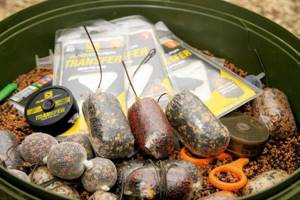
When carp swim up to a small amount of bait (consisting of small particles and neatly scattered), then without any delay they immediately begin to suck it up. If you have short leads, hooking occurs instantly as soon as the hook is in the fish’s mouth. And here the next nuance emerges, which is worth paying special attention to.
To catch carp on a short leash, I prefer to use an inline rig with “shooting” the sinker. And the point here is this. Due to the fact that the very distance from the sinker to the fish lip is a maximum of 8-10 cm of braid, it will be very easy for the carp to use some kind of “lever” (due to the heavy weight of the sinker) and immediately “knock” the hook out of the mouth (especially beardless).

Setting up inline – mounting for “shooting” the sinker
How do I personally assemble an inline rig set up to “drop” a heavy sinker? First of all, I use swivels with rings and always attach my leader to the exact ring (swivel) that has another/additional ring attached to it. Which, in turn, together with the swivel itself, I drag directly inside the inline sinker inserts. It is only very important that this insert is not (!) silicone, but made of plastic, because... very soft silicone - will not be able to hold the sinker in the correct position.
PVA bag - useful tips
- It would be a good idea to put a flavoring agent inside the bag (they come in tablet form) before throwing the bag into the water. When your sac dissolves, the tablet will begin to emit an attractive odor and this may continue for about an hour. This trick will help attract passing fish - that's a fact!
- In addition to various artificial attractants, you can use regular sugar, which can be used to coat the bait that you use to catch carp. You see, carp are very greedy for sweets, so they definitely won’t be able to swim past food that is a little sweetened.
- Another great ingredient that should be included in at least one of your PVA bags is dry groundbait and chili pepper pieces! Don't be too surprised if you never thought that fish could like spicy food - carp can! Small pieces will soften and rise to the top of the water's edge, but at the same time they will leave behind a great, attractive smell. You don’t need to put a lot of pepper at all; even a small amount will leave a good smell. It is also important that the pepper pieces are dried, otherwise they will not float.
- If you are fishing for carp several meters above the bottom, try leaving enough air in your bag so that it sinks more slowly. While it is sinking, it will have time to dissolve and not fall to the bottom, leaving the bait at medium depth. If you fish in seaweed, then this technique can also work here, because the bait will remain on the leaves and will not fall to the bottom.
- If your bags dissolve too quickly in the summer, try double packing so that the bait has a chance to get to the bottom before the bag dissolves completely.
- To test how long it takes for your pouch to dissolve, try this trick: Place foam inside the pouch. As soon as you throw it into the water, note the time when it dissolves, the foam will float to the top, where it will be clearly visible. This way you will know how quickly your pouch dissolves. This is necessary in order to understand whether the bag reaches the bottom before dissolving, because most often you need it to reach the bottom and everything goes well. Some bags dissolve quickly, especially in the warmer months, so stock up on plenty! Plus, using foam shows the exact location of your sachet, so you'll know whether it went where you wanted it or not.
Read! How to catch carp with boilies
Using a PVA bag to catch fish is a very simple and quite effective method. Feeder fishing has always been one of the best ways to catch carp, but with the advent of 'soluble feeders' it has become even easier!
Groundbait and bait
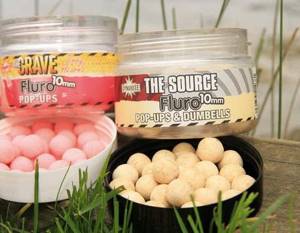
The next, no less important nuance (for carp fishing with this kind of equipment) is the competent choice of bait. As I mentioned just above, my personal preferences are large hooks and small baits on the “hair”. As for the latter, the ones that performed best (when fishing with PVA bags) were fluorescent baits. For example, such as Pop-Up “White Source” or “Pink Crave”. Their unique visual properties literally make the carp come down to them and be sure to taste them. And in order to make this easier for them, the bait needs to be raised a little (above the bottom). To solve this problem, I usually use longer leaders (than when fishing with wafters on a KD rig) and place a balancing shot on the “hair” (exactly in the middle). This allows my baits to seem to float above the bottom, rising slightly (slightly above the bait), and significantly simplify the suction process itself (with a pop-up fish).
Choosing gear for carp fishing
For any fisherman, one of the most important issues is the need for effective fishing. Therefore, you need to have a special set of gear for carp fishing. It includes not only fishing rods, but also special fishing lines and reels. By the way, if you choose the right gear, it will be much easier to catch a giant carp. Unfortunately, they must be not only of high quality, but also functional.
If you use bad gear, you can simply break the fishing line. Or there may be no bites. The latter option is better than the first, but it is best to approach it wisely. What do you need to effectively fish for carp?
- 1-4 carbon carp rods with medium action.
- Each must have inertia-free reels that can withstand the force load with high-capacity spools, allowing you to cast the rod far.
- The rod should have a length of 3.3 to 4.9 meters, depending on how far the bait needs to be cast.
- When carp fishing, a marker rod can be very useful , which is intended for finding a good place for fishing. If such tackle is used, it must be of the jig type.
- The fishing line should be premium quality monofilament with a diameter from 0.35 millimeters to 0.5 and above, depending on what goals you are pursuing. If you need to catch a larger carp, then the fishing line should be somewhat thicker.
This video specifically talks about carp fishing rods to novice anglers.
How to correctly fill out a PVA package?
As bait (for filling PVA bags), I usually use mixtures of different types of pellets (usually “Swim Stim”) with a diameter of no more than 2 millimeters. Thanks to the use of small pellets, I can always tie the bag as tightly as possible (with virtually no air inside it). As practice has shown, a tightly packed PVA bag flies much better and dissolves much faster. And now I will tell you in detail (and show you in the photos below) how to fill it out correctly.
